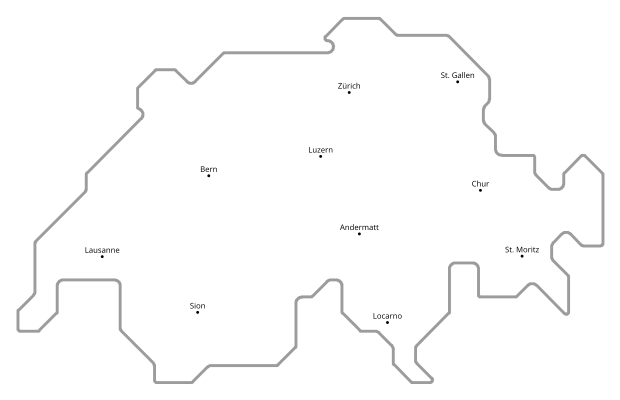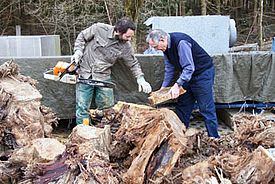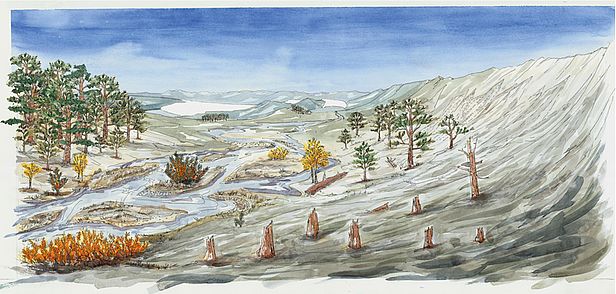In the summer of 2013, WSL researchers found 257 pine stumps on a building site in Zurich's Binz neighborhood on the foothills of the Uetliberg. At first glance, they look like any old tree stumps, yet they are causing a scientific sensation. What is remarkable about them is their age: the pines grew over 13,000 years ago, just after the retreat of the great alpine glaciers.
This makes this substantial and well-preserved discovery the oldest of its kind - and the world's largest for late-glacial trees. Over the next few years, scientists will be using them to gain valuable insights into the climatic conditions in Switzerland at the end of the last ice age.
Subfossil forest discovered in Zurich
Daniel Nievergelt, a dendrochronologist at the Swiss Federal Institute for Forest, Snow and Landscape Research WSL, was just having a look at a building site on the southern edge of the city. He knew there was some justification for hope of a spectacular discovery from his collaboration with his colleague Felix Kaiser, who died in 2012 and who in 1999 had already found subfossil wood during the excavation of the Uetliberg Highway Tunnel.
He took a closer examination of a few tree stumps that had been discarded as waste timber and found they were pine trees. He sent three samples to the Swiss Federal Institute of Technology (ETH Zurich), where C14 datation confirmed his suspicions: the timber was discovered to go back to between 12,846 BP and 13,782 BP.
With the support of the building-site management, the WSL researchers managed to salvage 256 pine-tree stumps. To the knowledge of the researchers involved, the quality and scale of the find are unique worldwide.
Zurich at the end of the last ice age
Approximately 13,000 years ago, the Alpine glaciers were still retreating in Switzerland. The arctic steppe was slowly changing into temperate woodland. The climate was still fluctuating considerably, but dwarf birch, sea buckthorn, juniper and of course pine trees had already begun to grown there again.
The young river Sihl meandered through the glacier sediment, continually shifting its riverbed and forming the landscape at the foot the Uetliberg hill. Meltwater and rainwater running down the Uetliberg triggered extensive landslides and mudslides.
For at least 2000 years, pine trees at the foot of the Uetliberg often died because they were repeatedly covered with sediment. Tree stems and branches decayed but the stumps, which were conserved airtight in clay, could survive for the next 13,000 years.
Will the find in Zurich-Binz bridge the data gap?
The Central European absolutely dated tree-ring chronology (blue in the graph below) is based on oak and pine trees and ends around 12,500 years before present.
Scientists hope that the new find will enable them to extend it a further 1,500 years back into the late-glacial period (click on graph for larger version).
An international and multidisciplinary project
The Binz wood is being analysed to find out more about the environmental and climatic conditions during the transition from the last ice age to the Holocene period. The parameters investigated include tree-ring width, wood density and anatomy, stable isotopes and ancient DNA.
In this project, we work in close collaboration with partners from ETH Zurich, Potsdam's GFZ German Research Centre for Geosciences, the laboratory of dendrochronology at the Building Department of the City of Zurich, the University of Freiburg im Breisgau and the Curt-Engelhorn Centre for Archeometry in Mannheim.



